
Indiana Avenue section of Cultural Trail opens for travelers
The first phase of the trail extension connects portions of the original six-mile Cultural Trail to historic Indiana Avenue neighborhoods and other areas of Indianapolis.

The first phase of the trail extension connects portions of the original six-mile Cultural Trail to historic Indiana Avenue neighborhoods and other areas of Indianapolis.

The e-bikes will be the first made available by the not-for-profit program, which currently offers 525 traditional bikes at 50 stations along or near the Indianapolis Cultural Trail.
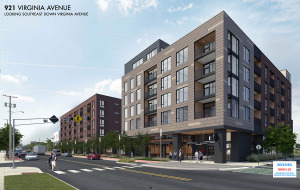
The site of a one-story, nondescript building in Fountain Square used sparingly for local White Castle operations soon could house a five-story building with nearly 200 apartments and six street-level storefronts.

The Indianapolis Cultural Trail Inc. is starting work on its 2-mile expansion, the trail’s first extension since it opened in 2013.
On Saturday, performances will take place downtown on Georgia Street, at Lugar Plaza and at Davlan Park in the Mass Ave neighborhood. Performances are also scheduled at the airport.
The donation, from the Eli Lilly and Co. Foundation, brings the project’s fundraising total to $27 million. The total project cost is estimated at $30 million.

The expansion will add two miles to the trail’s existing eight-mile network. It’s the first expansion since the trail opened in 2013.

The money will be used for programs, maintenance and new counters that will keep track of how many people are using the trail.

Indianapolis Cultural Trail Inc. officials announced Wednesday that they’ve raised enough money to keep a popular electronic piece of public art in operation for years to come.
The 8-mile downtown trail features five acres of plantings and 25,000 square feet of bioswales, which are meant to filter pollution from water.

If successful, the Keep Ann Dancing fundraising campaign, announced Thursday morning, will pay for hardware and technology upgrades and a maintenance fund for Ann Dancing by British artist Julian Opie.
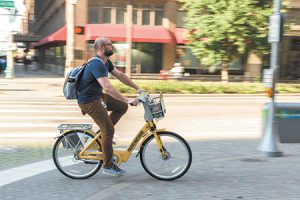
Kären Haley, executive director of the Indianapolis Cultural Trail, talks with guest host Anthony Schoettle about the timeline for the bikeshare expansion and why it was important to locate stations outside of downtown.

The Indiana Pacers Bikeshare program plans to roll out 23 new stations next summer—some of which will be miles away from the Mile Square.
Brian Payne, the mind behind the Indianapolis Cultural Trail, says he is generally supportive of electric scooter use on the trail—with a caveat.
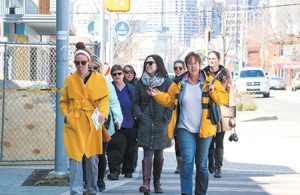
Developed in collaboration with longtime local food expert Jolene Ketzenberger, the guided tours offer an afternoon of culinary adventure along the eight-mile downtown trail.
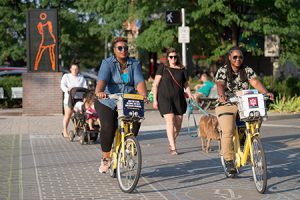
The Indianapolis Cultural Trail was supposed to be a nice city amenity and promote a healthy lifestyle among downtown residents and visitors. But it’s become much more.

It’s tough to look at your own community and figure out what it’s doing that no one else is. But IBJ gave it a shot. Here are four things other cities could copy from us.
The Indiana Pacers Bikeshare system is adding two new stations next month—and it’s hoping for a much larger expansion down the road.
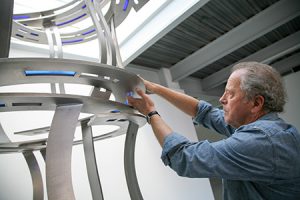
Built from steel, bronze, aluminum and glass, the sculptures tend to grow larger the higher they get.
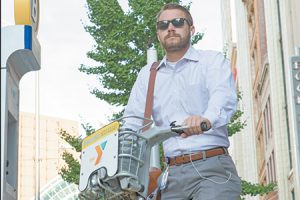
All 251 bikes are outfitted with GPS equipment, so staffers can identify their location. And data collected from sign-ups for daily and annual passes helps staffers determine usage patterns.